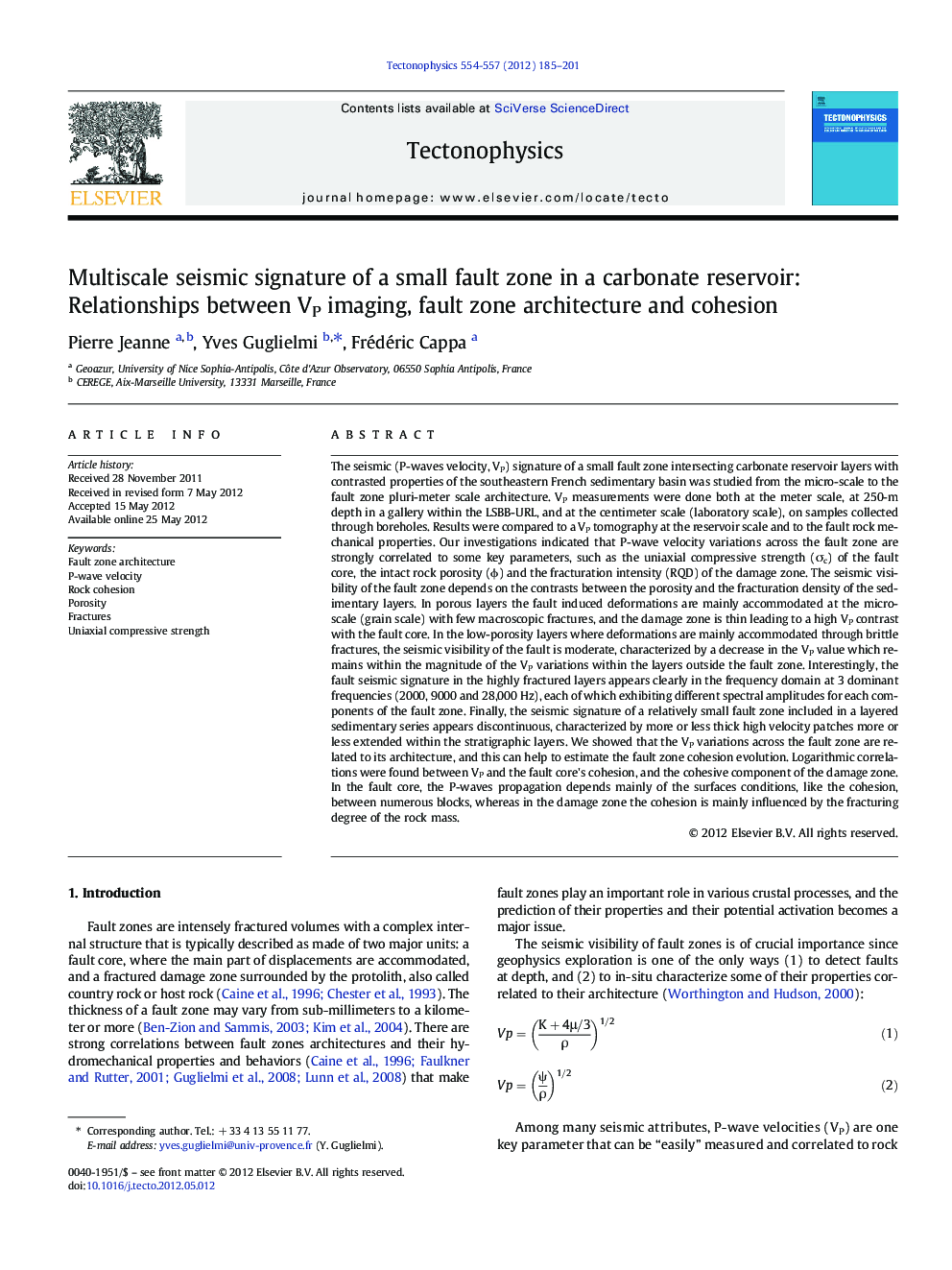| کد مقاله | کد نشریه | سال انتشار | مقاله انگلیسی | نسخه تمام متن |
|---|---|---|---|---|
| 6434237 | 1636818 | 2012 | 17 صفحه PDF | دانلود رایگان |

The seismic (P-waves velocity, VP) signature of a small fault zone intersecting carbonate reservoir layers with contrasted properties of the southeastern French sedimentary basin was studied from the micro-scale to the fault zone pluri-meter scale architecture. VP measurements were done both at the meter scale, at 250-m depth in a gallery within the LSBB-URL, and at the centimeter scale (laboratory scale), on samples collected through boreholes. Results were compared to a VP tomography at the reservoir scale and to the fault rock mechanical properties. Our investigations indicated that P-wave velocity variations across the fault zone are strongly correlated to some key parameters, such as the uniaxial compressive strength (Ïc) of the fault core, the intact rock porosity (Ï) and the fracturation intensity (RQD) of the damage zone. The seismic visibility of the fault zone depends on the contrasts between the porosity and the fracturation density of the sedimentary layers. In porous layers the fault induced deformations are mainly accommodated at the micro-scale (grain scale) with few macroscopic fractures, and the damage zone is thin leading to a high VP contrast with the fault core. In the low-porosity layers where deformations are mainly accommodated through brittle fractures, the seismic visibility of the fault is moderate, characterized by a decrease in the VP value which remains within the magnitude of the VP variations within the layers outside the fault zone. Interestingly, the fault seismic signature in the highly fractured layers appears clearly in the frequency domain at 3 dominant frequencies (2000, 9000 and 28,000Â Hz), each of which exhibiting different spectral amplitudes for each components of the fault zone. Finally, the seismic signature of a relatively small fault zone included in a layered sedimentary series appears discontinuous, characterized by more or less thick high velocity patches more or less extended within the stratigraphic layers. We showed that the VP variations across the fault zone are related to its architecture, and this can help to estimate the fault zone cohesion evolution. Logarithmic correlations were found between VP and the fault core's cohesion, and the cohesive component of the damage zone. In the fault core, the P-waves propagation depends mainly of the surfaces conditions, like the cohesion, between numerous blocks, whereas in the damage zone the cohesion is mainly influenced by the fracturing degree of the rock mass.
⺠Factors influencing the seismic signature of a fault zone: the porosity, the fractures density and properties, and the compressive strength. ⺠We propose models of Vp evolution across a small fault zone within a carbonate reservoir. ⺠Correlation between Vp and fault strength properties between: Vp-Ïc in the damage zone, and between Vp-Ïc in the fault core.
Journal: Tectonophysics - Volumes 554â557, 25 July 2012, Pages 185-201